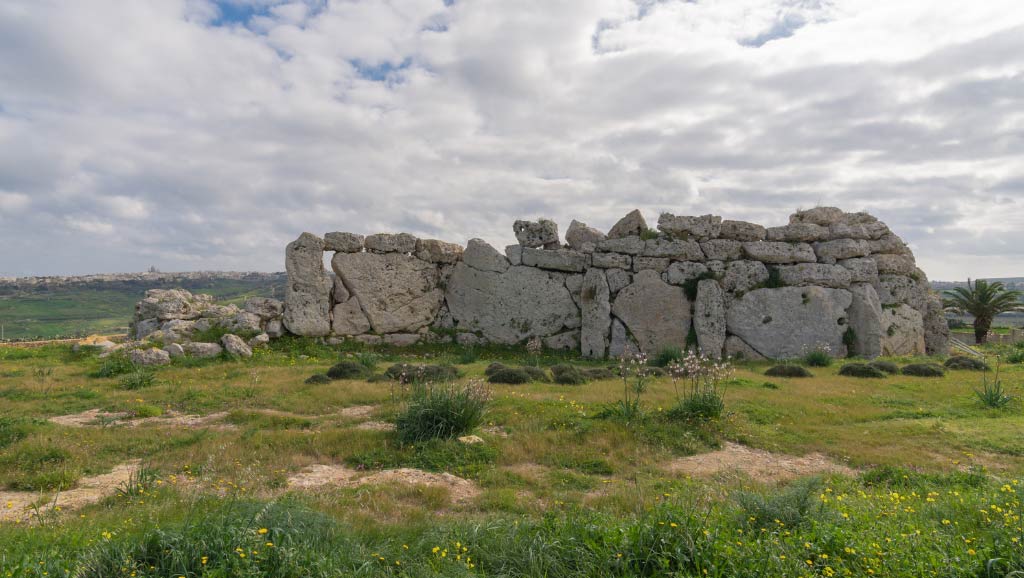Gozo, Malta’s enchanting sister island, is rich in history and culture, offering numerous historical sites that reflect its storied past. From ancient temples to mediaeval fortresses, here are the top ten historical locations you must visit on Gozo, each with its unique story, location details, features, and visiting tips.
1. Ggantija Temples
Location
Xaghra, Gozo
History and Features
Dating back to around 3600 BC, the Ggantija Temples are among the oldest free-standing structures in the world, predating both Stonehenge and the Egyptian pyramids. These Neolithic temples were built by an unknown civilization and are shrouded in mystery. The name “Ggantija” comes from the Maltese word for giant, as local legend attributed the construction to giants.
Best Time to Visit
Visit in the early morning or late afternoon to avoid crowds and the midday heat. The site is open year-round, but spring and autumn offer the most pleasant weather.
What to See
Admire the massive megaliths and explore the centre, which provides insights into the construction and significance of the temples.
2. Citadel (Cittadella)
Location
Victoria (Rabat), Gozo
History and Features
The Citadel, or Cittadella, has been the island’s defensive stronghold since the Bronze Age, though the current structures primarily date from the Medieval and Renaissance periods. It served as a refuge for Gozitans during pirate raids and other invasions.
Best Time to Visit
Sunset offers spectacular views over the island, and visiting in the evening can provide a quieter experience.
What to See
Explore the fortified walls, the Cathedral of the Assumption, and several museums, including the Gozo Museum of Archaeology and the Old Prison.
3. Ta’ Pinu Basilica
Location
Gharb, Gozo
History and Features
The Basilica of the National Shrine of the Blessed Virgin of Ta’ Pinu is a revered pilgrimage site. The original chapel dates back to the 16th century, but the current structure was completed in the early 20th century. It is famed for miraculous healings and beautiful architectural design.
Best Time to Visit
Anytime during the year, but visiting during a local religious festival can be particularly inspiring.
What to See
Marvel at the intricate mosaics, stained glass windows, and the peaceful surroundings of this spiritual site.
4. Xlendi Tower
Location
Xlendi, Gozo
History and Features
Built in 1650 by the Order of Saint John, Xlendi Tower is the oldest of the surviving coastal watchtowers on Gozo. It was part of a network of fortifications designed to protect against pirate attacks.
Best Time to Visit
Visit during daylight hours for safety and to enjoy the stunning coastal views.
What to See
Climb to the top for panoramic views of the coastline and Xlendi Bay. The tower also provides historical exhibits about its role in defending the island.
5. Ta’ Kola Windmill
Location
Xaghra, Gozo
History and Features
Built in the 18th century, Ta’ Kola Windmill is one of the few remaining windmills on the Maltese Islands. It has been restored to its original working condition and houses a museum showcasing traditional Gozitan tools and crafts.
Best Time to Visit
Open year-round, but weekdays are less crowded.
What to See
Explore the mill’s machinery, the miller’s living quarters, and the collection of traditional tools.
6. Dwejra Tower
Location
Dwejra, Gozo
History and Features
Constructed in 1652, Dwejra Tower was part of the island’s coastal defence system. It overlooks the dramatic landscape of Dwejra Bay, known for the Azure Window (which collapsed in 2017) and the Inland Sea.
Best Time to Visit
Visit in the late afternoon to capture the stunning sunset over Dwejra Bay.
What to See
Explore the tower and enjoy breathtaking views of the coastal formations and the nearby Fungus Rock.
7. St. George’s Basilica
Location
Victoria (Rabat), Gozo
History and Features
St. George’s Basilica, known as the “Marble Basilica,” is a magnificent baroque church built in the 17th century. It is richly decorated with marble, paintings, and sculptures.
Best Time to Visit
Open daily, but attending a service can provide a deeper sense of the local community and religious traditions.
What to See
Admire the intricate interior decorations, the grand dome, and the exquisite artwork.
8. Mgarr ix-Xini Tower
Location
Ghajnsielem, Gozo
History and Features
Built by the Knights of St. John in 1661, this coastal watchtower guarded the entrance to Mgarr ix-Xini Bay, a strategic and picturesque inlet.
Best Time to Visit
Spring and autumn are ideal for avoiding the peak tourist season and enjoying pleasant weather.
What to See
Enjoy the scenic hike to the tower and explore the nearby bay, which is excellent for swimming and snorkelling.
9. Santa Cecilia Chapel
Location
Ghajnsielem, Gozo
History and Features
This small chapel, dating back to 1544, is the oldest surviving chapel in Gozo. It has recently been restored and is a fine example of late mediaeval ecclesiastical architecture.
Best Time to Visit
Anytime during the day, as it’s typically uncrowded and serene.
What to See
Admire the simple yet charming architecture and the peaceful surroundings.
10. Gharb Folklore Museum
Location
Gharb, Gozo
History and Features
Housed in an 18th-century building, the Gharb Folklore Museum showcases traditional Gozitan life through an extensive collection of artefacts, including tools, costumes, and household items.
Best Time to Visit
Open year-round, but weekdays are usually quieter.
What to See
Explore the various rooms dedicated to different aspects of rural Gozitan life, providing a fascinating glimpse into the island’s past.
Enjoy Gozo’s Historical Must-Visit Sites
Gozo’s historical sites offer a rich tapestry of the island’s heritage, from ancient temples and mediaeval fortresses to baroque churches and traditional museums. Each location tells a unique story, reflecting the diverse influences that have shaped Gozo over millennia. By visiting these top ten historical sites, you’ll gain a deeper appreciation of Gozo’s cultural and historical significance. Plan your trip to make the most of each site’s unique features, and you’ll be rewarded with a truly enriching experience.



